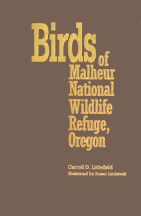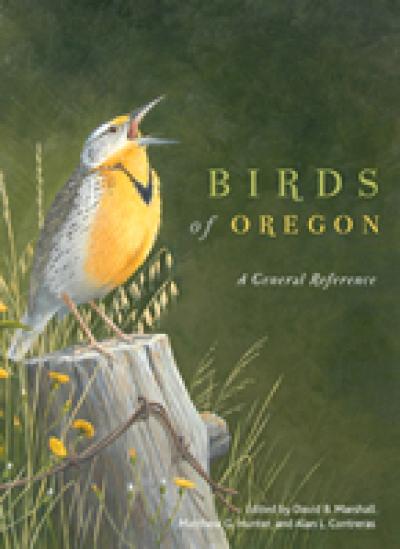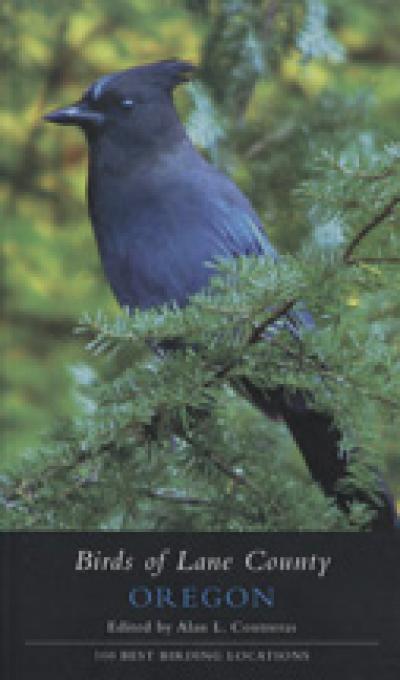
ISBN 9780870713606 (hardcover)
Birds of Malheur National Wildlife Refuge, Oregon
Carroll D. Littlefield
Illustrated with drawings by Susan Lindstedt.
The Malheur National Wildlife Refuge in southeast Oregon is internationally known to ornithologists and birders. Throughout the year, but especially during spring and autumn migrations, hundreds of thousands of birds can be seen on the refuge. Birds of Malheur National Wildlife Refuge provides the first exhaustive report on the 312 species recorded here over the last 110 years. For each species you'll learn: how common it is on the refuge; where it is likely to be found on the refuge; dates of its earliest, latest, and most frequent sightings on the refuge.
About the author
C. D. Littlefield is a legendary figure to western birders and an internationally recognized expert on the birds of Malheur, particularly the Sandhill Crane.
Read more about this author
Introduction
The Area
Malheur-Harney Lakes Basin
Migration Routes
Climate
Malheur National Wildlife Refuge
Double O
The Lake Region
Blitzen Valley
Vegetation and Bird Habitat
Bird Finding
Spring Migration
Summer Migration
Autumn Migration
Winter Season
Species Accounts
Order: Gaviiformes
Family: Gaviidae
Order: Podicipediformes
Family: Podicipedidae
Order: Pelecaniformes
Family: Pelecanidae
Family: Phalacrocoracidae
Order: Ciconiiformes
Family: Ardeidae
Family: Threskiornithidae
Order: Anseriformes
Family: Anatidae
Order: Falconiformes
Family: Cathartidae
Family: Accipitridae
Family: Falconidae
Order: Galliformes
Family: Phasianidae
Order: Gruiformes
Family: Gruidae
Family: Rallidae
Order: Charadriiformes
Family: Charadriidae
Family: Scolopacidae
Family: Recurvirostridae
Family: Laridae
Order: Columbiformes
Family: Columbidae
Order: Cuculiformes
Family: Cuculidae
Order: Strigiformes
Family: Tytonidae
Family: Strigidae
Order: Caprimulgiformes
Family: Caprimulgidae
Order: Apodiformes
Family: Apodidae
Family: Trochilidae
Order: Coraciiformes
Family: Alcedinidae
Order: Piciformes
Family: Picidae
Order:Passeriformes
Family: Tyrannidae
Family: Alaudidae
Family: Hirundinidae
Family: Corvidae
Family: Paridae
Family: Aegithalidae
Family: Sittidae
Family: Certhiidae
Family: Cinclidae
Family: Troglodytidae
Family: Mimidae
Family: Muscicapidae
Family: Motacillidae
Family: Bombycillidae
Family: Ptilogonatidae
Family: Laniidae
Family: Sturnidae
Family: Vireonidae
Family: Emberizidae
Family: Fringillidae
Family: Passeridae
Literature Cited
Appenidx: List of Common and Scientific Names of
Plants, Mammals, Fish and Reptiles
Index of Common Names of Birds
List of Maps
Malheur National Wildlife Refuge and Vicinity
Malheur NWR
Malheur NWR: Units I (Double O) and II (Harney Lake)
Malheur NWR: Unit III (Malheur Lake)
Malheur NWR: Unit IV (Northern Blitzen Valley)
Malheur NWR: Unit V (South Blitzen Valley)
Spring Migration Tour
Autumn Migration Tour
In the desert regions of southeastern Oregon, a travelers's impression is one of endless miles of wasteland and very little water. Speeding along the three major highways which traverse the region, the motorist mostly sees great expanses of desert shrubs, broken only by rimrocks, occasional stands of junipers, and widely scattered, isolated ranches. Most people do not realize that about 20 miles south of Burns, in Harney County, is one of the largest wetland complexes in North America.
The largest freshwater marsh in the western United States--Malheur Lake--is located in the central portion of Harney County. Beginning in 1982 and continuing through 1986, this marsh became Oregon's largest lake as a result of an abundance of precipitation coupled with low evaporation rates. Surrounding this marsh, or lake, are thousands of acres of meadows, ponds, alkali flats, shrubs uplands, and rimrocks, providing habitat for a multitude of bird species. Especially vital to many wildlife species are the native meadows. During spring migration over 250,000 ducks, 125,000 geese, and 6,000 lesser Sandhill Cranes may use this habitat simultaneously. In addition, nearly 25,000 duck pairs, 2,000 Canada Goose pairs, 1,500 Long-billed Curlews, and hundreds of other shorebirds, marshbirds, and songbirds remain through the summer to nest. In the deeper marshes, gulls, terns, ibises, herons, egrets, and cormorants usually find ideal nesting habitat. Although much of this area is privately owned, the federally owned Malheur National Wildlife Refuge (NWR) is the regional center for species diversity and abundance.
The purpose of this report is to summarize bird data which have been accumulating on Malheur NWR, or what was to become the refuge, for over 110 years. Bird descriptions and distributions are not included here as this information is readily available in numerous recently published field guides.
Included in this report are the time periods when species have been present on the refuge and, for most forms, locating and habitat where they have been recorded in the past. However, because birds are highly mobile organisms, individuals of any species can be seen almost anywhere on the refuge. Dates presented here are certainly not carved in stone, as each year three or four species establish new arrival or departure records. Also, usually one or two species new to the refuge are added annually. therefore, by the time this report becomes available, some species will have likely established new arrival or departure dates. Information contained in this report is through December 31, 1988.




